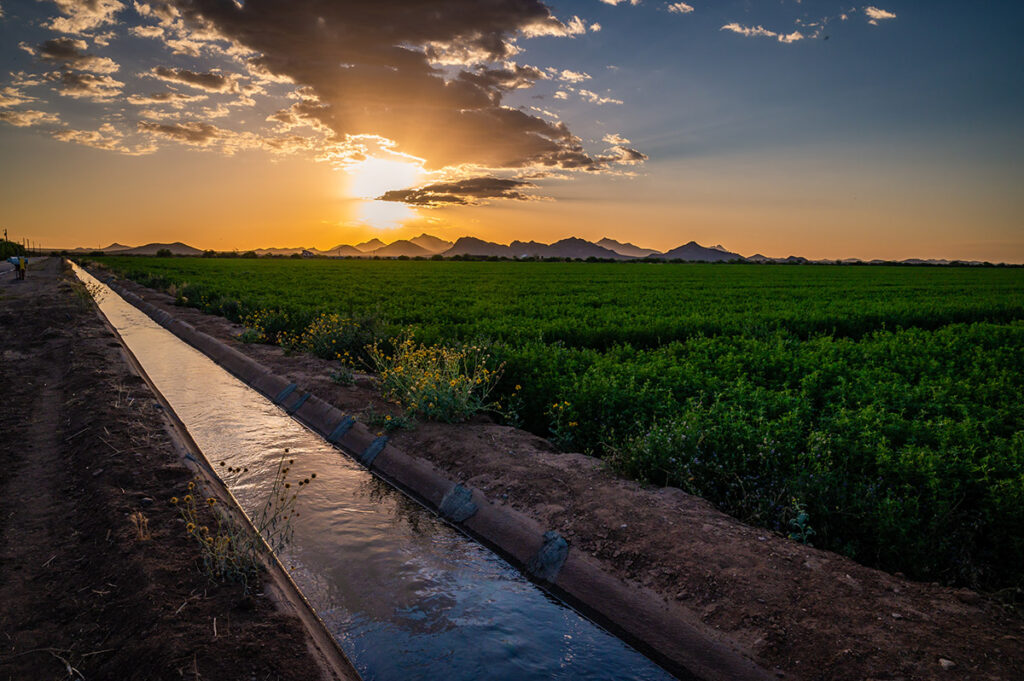If you’re considering enrolling your land in the Conservation Reserve Program (CRP), you likely already have some idea of the benefits of participating in this program. But you may be wondering what, if anything, are the drawbacks to CRP?
While the positives of participating in CRP certainly outweigh the negatives, it’s important to understand both the good and bad aspects of the program in order to determine if it’s the right move for you and your farmland.
Pro: Positive effects on soil
The effect of CRP on soil is two-fold; it not only helps to reduce soil erosion but also improves the quality of the soil itself.
Over time, soil erosion can lead to large swathes of land becoming unusable for agricultural practices, threatening the productivity of farmland across the country. By growing thick conservation covers on marginal land, CRP practices have reduced the erosion of soil by over 9 billion tons since the program’s inception. These covers protect highly erodible land from rain, snow, sheet, rill, and wind erosion, helping to secure the productivity of this land for years to come.
Additionally, soil health can be improved by CRP. New initiatives like the Soil Health and Income Protection Program (SHIPP) and a recent $10 million initiative to monitor soil carbon strive to improve the health of the soil as well as determine the effects of climate change on this vulnerable soil and to lessen those negative impacts.
Pro: Improves water quality
CRP practices have been shown to improve water quality in numerous ways. By establishing grass strips, prairie strips, and other types of buffer strips on CRP land, farmers can prevent sediment and other toxic contaminants from entering waterways.
Nutrients that are harmful in large quantities can also be removed from water sources. Nitrogen and phosphorus found in sediment runoff is reduced through CRP, and nitrate or nitrogen found in wetlands can be converted into atmospheric nitrogen, a much safer gas.
Pro: Creates wildlife habitat
Initiatives like the Permanent Wildlife Habitat (CP-4D) and Marginal Pastureland Wildlife Buffers (CP-29) help to ensure that wildlife populations are protected and encouraged to grow across CRP lands. Lush ground covers consisting of wildflowers, shrubs, and native grasses provide a protective habitat for pollinating insects, waterfowl, and grassland birds, as well as essential nutrition, allowing these diverse species to thrive.
Pro: Provides financial incentives
CRP participants are eligible for a number of financial benefits by enrolling in the program, including rental payments and cost-share assistance. Rental payments are based on factors such as soil productivity and average cash rent for your county, while cost-share payments of up to 50 percent of establishment costs can be provided.
Con: Only certain land is eligible
In order to enroll in CRP, you and your land must meet a handful of eligibility requirements.
For participating farmers, you must have owned or operated your land for at least 12 months before the enrollment period ends, with exceptions made in cases where the previous owner has died, the ownership change was caused by foreclosure, or the FSA can verify that the new owner did not acquire the land solely for CRP purposes.
As far as land eligibility, current guidelines state that enrolled land must be highly erodible and planted for agricultural purposes for four of the six crop years from 2012 to 2017. Additionally, it must have no physical or legal restrictions from being planted in a normal fashion. Also acceptable are alfalfa and other multiyear grasses and legumes grown in rotation for less than 12 years.
Con: Takes land out of production
By design, land enrolled in CRP cannot be used for crop production, as the purpose of the program is to conserve those lands from deterioration caused by traditional agricultural practices. Farmers may find that they can make more money from this land by using it for crops, although this short-term profitability can lead to long-term degradation of the soil, which is exactly what CRP is attempting to combat.
Con: Wildlife consideration and native vegetation not mandatory
As stated above, CRP practices certainly can provide excellent wildlife habitat, they don’t necessarily have to do so. When croplands being actively farmed surround CRP grasslands, which is often common practice, CRP lands and the small animals that inhabit them can be targeted by predators.
Additionally, while utilizing native plants for CRP ground cover is encouraged, it is not required by the program, meaning farmers can plant introduced species for CRP purposes that ultimately offer little to no benefit to native wildlife.
Con turned pro: Application process
Applying to CRP can be a confusing, lengthy process, with contract terms and requirements that can be difficult to understand. Thankfully, FDCE can turn this con into a pro, by assisting you throughout your application and helping you to establish CRP practices on your land. Contact us today to learn more about how FDCE can assist with getting your land CRP-ready.

